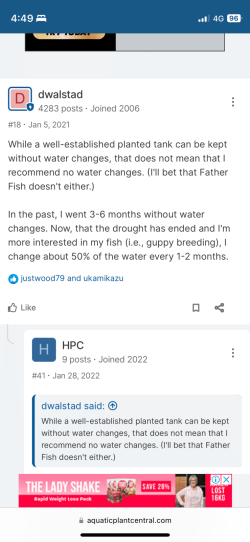The natural tanks do require maintenance and depending on the setup, will need as much upkeep, especially in the beginning as the standard tank, but just a different kind of maintenance. I've kept several of these tanks from a small 30 gallon, to a 60 gallon and the labor needed to put together the aeration system for the plant roots, the support system to hold the large plants in place in the tank to keep the plant leaves above the water, setting up the lighting to support good plant growth takes some real effort. Then, there's the time tending to the plants themselves. They must stay healthy and doing the job of keeping the tank water nitrogen free. If this is your first attempt at setting up such a system, there's a lot of trial and error to deal with as well. But, this system is so interesting and I'm amazed at how well it works.
10
10
Last edited:




